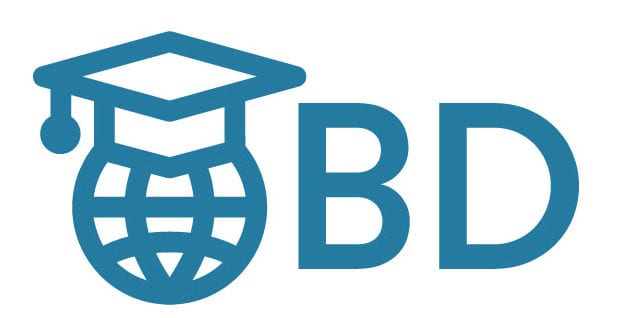- Introduction and Overview
- Course Objectives
- Scope and Limitations of the Course
- Course Proper
- References

INTRODUCTION AND OVERVIEW
What is Microbiology?
Microbiology, simply put, is the study of microbes or microorganisms – its cellular structure and function, terminology, effects, and interactions with its fellow microbes or other organisms such as humans, animals (whether alive or decomposing), or plants, etc. It is a broad and complex field of study which significantly intersects other scientific disciplines such as:
- Medicine
- Epidemiology
- Biotechnology
- Bioengineering
- Agriculture
- Environmental science
- Health policy
- Infection control
- Genetics and Molecular Biology, and,
- even Astronomy
Video Clip 1: “Space Station Microbiology: Where People Go, Microbes Follow”
By the NASA Johnson Space Center, September 18, 2019
Why Study Microbiology?
“The world wouldn’t exist as we know it if we didn’t have microorganisms with us.”
Dr. Martha Trujillo
University of Salamanca
Microbiology Society
Video Clip 2: “Why Microbiology Matters?”
by the Microbiology Society, May 5, 2020
Microorganisms are everywhere. Just look at the different branches or applications of microbiology stated in the previous section. Microorganisms are responsible for the many different types of food we have, whether it’s root crops or dairy. Microbes are also the core ingredient of various medicines. For example, the first antibiotic drug, Penicillin, is derived from mycobacterium or fungi.
There are also geological studies that suggest that microbes have existed on the planet anywhere from 3 to 4 billion years ago. These could be evidence that microorganisms are the first inhabitants on the planet, which distinguishes earth from its neighboring barren planets.
The word “barren” is also a term that describes an individual who can’t produce an offspring, depends on the presence or absence of spermatozoa, a microorganism found in male humans that is responsible for fertilizing an ovum.
Spermatozoa are not the only microorganisms found in human bodies. Bacteroides, a strain of “good bacteria” that helps in food digestion, is a “permanent resident” of the human gut (and human feces, as well).
We mentioned the term “good bacteria,” and yes, there are such, and this is one of the many reasons that make microbiology even more exciting and valuable. Microorganisms were initially thought of as harmful and nefarious to human health, and this is still a fact, but not all microbes are harmful. Take Bacteroides, for example. These, along with Lactobacilli and Bifidobacteria, break down indigestible fibers from vegetables which the body can’t digest on its own.
Microbiology also lays the foundation for bioengineering and biogenetics. These fields combine to help develop new drugs to combat new strains of pathogens. However, these fields can also be used to develop a new generation of weapons – the biochemical kind used for bioterrorism. Anthrax, caused by Bacillus anthracis, is an example of such. Powdered anthrax, carried by snail mails, gained notoriety in 2001.
Abstract and complicated for some, microbiology is a fascinating, exciting, and continually relevant scientific field. Most planetary life begins and ends with microorganisms. Human functions, such as digestion and reproduction, are also facilitated by microorganisms.
There’s so much value in learning even just the basics of microbiology because these unseen living organisms are part of every instance of our lives. A good starting point to appreciate the value of the field is the difference between a bacteria and a virus, among other microbes.

COURSE OBJECTIVES
By the end of this course, students or readers are expected to:
- Define the study of Microbiology
- Describe the contributions made by the pioneers of Microbiology
- Explain the value of knowing how to identify the different microorganisms
- Identify or enumerate the different microorganisms, from the three domains down to its classes or phyla
- Differentiate prokaryotic cells versus eukaryotic cells
- Explain the reason behind the taxonomic change from a dichotomous classification to the birth of the “three domains.”
- Differentiate the three domains in terms of cell morphology
- Relate the known pathogenic microbes to present diseases
- Identify the structure of a virus and relate this to its virulence
- Define and differentiate the different antibiotics in the market, e.g., anti-bacterial, antiviral, or antifungal antibiotics.

SCOPE AND LIMITATIONS OF THE COURSE
Microbiology is a vast scientific study and discipline. To choose which topics should be included in this course was indeed a challenge. This material is intended for novice learners or unfamiliar readers looking to gain fundamental knowledge about the field of microbiology.
This course will be limited to presenting only the types of microorganisms that are of value to human health while observing the current prevailing classification or taxonomy. Those that are not relevant to human health but are vital in the phylogenetic tree will still be tackled briefly.
The “Checkpoint” questions after each sub-section test your understanding of the preceding topic. Questions prefaced by “Further Reading” pertain to thinking points and resources that can be found in the reading list (references) on the last page. This is a prompt for you to drill down on the topics using the full list of references used for this course that can be found at the end of this material.

COURSE PROPER
Brief History of Microbiology
The Spontaneous Generation Hypothesis
In the olden days, diseases were attributed to superstitions (a punishment from deities), imbalances, and malodor. Life was known to grow or generate from any non-living entity, like soil, that is moist enough to induce the “spontaneous generation” of animals, thus spawning the hypothesis of the same name.
Hooke, Leeuwenhoek and the Birth of Microbiology
The concept of the “cells” being the building blocks of organisms was first proposed by Robert Hooke in 1665, after viewing what looked like small compartments under his rudimentary microscope.
A few years later, Anton Van Leeuwenhoek constructed microscopes capable of larger resolutions and magnifications which were considered advanced at the time. He then became the first scientist to observe live microorganisms and described and drew the shapes and motions of what he observed.
Figure 1 below illustrates that the microorganisms can be spheroidal, circular, wavy, or rod-like in shape (illustrations A, B, E, F, and G, highlighted in green). In terms of motion, Leeuwenhoek tried to describe these through illustrations C and D (highlighted in red) in the figure below, in what looked like a spiral, irregularly patterned motion.
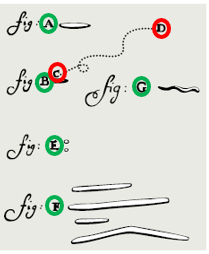
Figure 1: Leewenhoek’s illustrations prepared in 1863 (highlighted circles not part of the original illustration)
Figure from Microbiology: An Introduction (3rd ed.)
What Leeuwenhoek, now known as the “Father of Microbiology,” observed at the time is what we know now as bacteria. Throughout his lifetime, he made close to 500 microscopes with a maximum magnification of 300x.
Through these, he was able to discover blood cells, roundworms (nematodes), and spermatozoa or the sperm cell of different species, including mammals, which helped lay the foundation for vertebral reproduction.
On the other hand, through Hooke’s observations, which later on evolved to become the “Cell Theory,” scientists can understand how microorganisms arise, live, thrive, and survive the different conditions. The Cell Theory resulted in a deeper understanding of cell growth, metabolism, replication, and even mutation.
But discovering microorganisms and their function was just the beginning. Years later, the need for further discoveries arose with the prevalence of difficult (at the time) diseases, the need to find a cure for those diseases, and an explanation of what causes food spoilage.
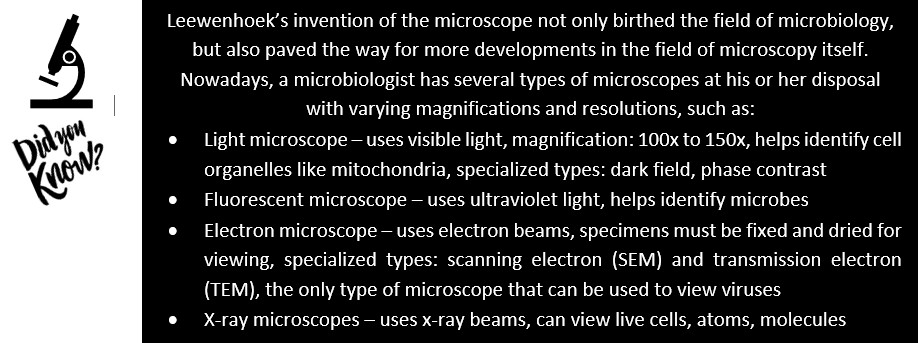
Pasteur, Lister, Koch – The Early Trailblazers in Microbiology
Louis Pasteur’s experiments using flasks with bent necks finally discredited the Spontaneous Generation hypothesis by proving that while microorganisms live in solids, liquids, and even in the air, it needs to colonize another entity – a host like a human body or food for it to grow. Thus, life does not grow spontaneously but rather catalytically.
Pasteur was also a pioneer in food biology. He discovered the process of fermentation, which prevents the souring and spoilage of alcoholic beverages like beer and wine. Fermentation rids the presence of air in a substance which then allows yeasts found in these beverages to convert sugars into alcohol, instead of vinegar, thus, preventing spoilage.
Pasteurization, which was coined after him, kills the bacteria that causes spoilage through boiling. The said technique was also applied to other perishable beverages like milk. The Germ Theory was also one of Pasteur’s many contributions to the field. The theory is simple: disease starts with the presence of microbes. However, it is this simplicity that caused the theory to be debunked many times over from its inception.
Contemporaries of Pasteur include Joseph Lister, the first surgeon who employed infection control by using phenol to sterilize the surgical area. Another fellow is medical practitioner Robert Koch, who’s also credited for the Germ Theory since the postulates he devised called Koch’s Postulates were firmly based on it.
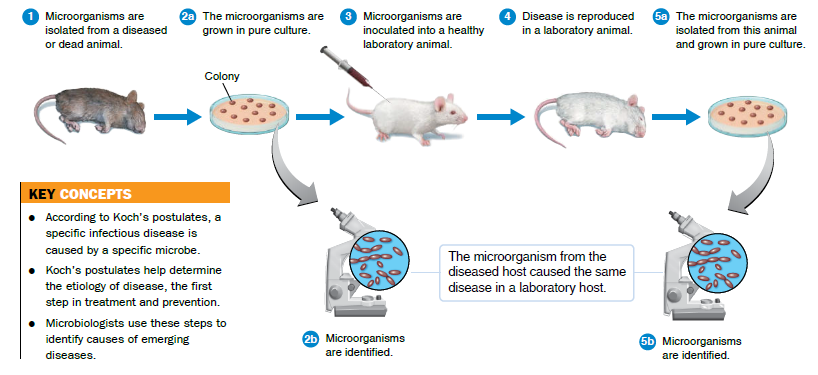
Figure 2: Koch’s Postulates of Understanding Disease and Infections
Figure from Microbiology: An Introduction (3rd ed.)

- Think of other types of food that use either fermentation or pasteurization or both to preserve its shelf-life
- Choose two other scientific disciplines with which microbiology intersects. Explain how these fields relate or complement each other
- Enumerate the pioneers of Microbiology mentioned in this section and elaborate on their contributions to the field
Branches of Microbiology
The field of Microbiology has grown so much over the centuries. It has spawned several subcategories based on two premises based on the application of its concepts and the classification or type of the organisms.
The latter is the more commonly known subdivision.
Branches of Microbiology based on microbiological classification:
- Bacteriology – the branch that deals with bacteria, as the name implies
- Mycology – deals with fungi which are subdivided into yeasts and molds
- Phycology – deals with algae
- Parasitology – deals with protozoa, arthropods, and parasites such as worms
- Immunology – studies the interaction of a host such as the human body, the pathogen, such as a microbial pathogen and the host’s immunity.
- Virology – deals with viruses, its structure, survival and mutation mechanism, virulence, etc.
Branches of Microbiology based on microbiological applications or source
- Agricultural Microbiology – involves the study of microbes in the soil, water treatment systems, and agricultural environment.
- Industrial Microbiology – studies the large-scale use of microbes in formulating antiseptics, disinfectants, antibiotic and antiviral drugs, vaccines, and other commercial medical purposes.
- Medical Microbiology – studies the pathology of infectious diseases, the causative agent, signs, and symptoms it manifests in its host and how the host is and can be protected from it. It overlaps with immunology, bacteriology, virology, and industrial microbiology.
- Food Microbiology – deals with microorganisms and its interactions with food, i.e., what causes spoilage, which microorganisms improve its shelf-life, etc.
- Microbial Biotechnology – deals with the genetic engineering of microorganisms for drug production, drug testing, and other experimental procedures and tests.
- Microbial Ecology – deals with the diversity of microorganisms in natural environments. A known sub-branch is biogeochemistry or geomicrobiology. It tackles the relationship of microorganisms and the geological makeup of the environment and its by-products like coal and other minerals.
- Microbial Biochemistry – deals with the inner workings of cellular microbiology, specifically the chemical reactions and enzymes that are involved in the processes.
The Microbiome, particularly the Gut Microbiome, is a fresh take on one aspect of microbiology where all microbes were initially thought of as purely pathogenic or disease-causing in nature. The concept is still a work in progress, but to better understand it, watch this infographic video by TED-Ed below and try to answer the reflective questions that follow.
Video clip 3: “How the Food You Eat Affects Your Gut”
By: Shilpa Ravella of TED-Ed
- Reflect on your lifestyle, particularly on your food choices. Based on the clip, regularly eating processed and fast-food staples have harmful effects on our gut bacteria and our gut as a whole. What could be the possible symptoms of an unhealthy gut brought about by poor food choices?
- How can you use the established concept of the gut microbiome to fortify the health of your gut? What type of changes to your diet should you apply?
Microorganisms: The Invisible Focal Points of the Field
What are Microorganisms?
Microorganisms or microbes are minute, living organisms that can only be visualized using a microscope or some other magnifying aid, except for giant worms or some type of helminths.
The figure below compares the relative size of the different known microorganisms and the kind of microscope from which it can be seen.

Figure 3: Relative Sizes of the Different Types of Microorganisms
Figure from Lippincott’s Illustrated Reviews: Microbiology. 3rd edition.
As previously stated, microorganisms are ubiquitous, or to be precise, anywhere where there are other types of organisms. They usually form colonies in various ecosystems, which includes the various organ systems of the human body. They can reside within that ecosystem, forming a combination of symbiotic, commensal, and mutual relationships, as is the case with the healthy human flora found in the digestive tract or body cavities like the oral cavity and the vaginal cavity.
To some extent, these microbial residents can also be opportunistic, becoming pathogenic or disease-causing once the body’s defenses are down, a known cause for oral cavity and upper respiratory tract infections (URTI).
Some pathogenic organisms do not reside in an ecosystem. Instead, they invade the target host by either ingestion (hepatitis, FMD, cholera), inhalation (SARS, COVID-19, tuberculosis), contact absorption (leptospirosis, chickenpox, pink eye, herpes), and even serum or fluid body transfusion (AIDS, hepatitis, HPV).
Classification of Microorganisms – Microbial Taxonomy
The purpose of classification is to bring some sense and order into the plethora of microorganisms that have been discovered and are waiting to be discovered, which is especially true as microorganisms can quickly mutate. It also “facilitates research, scholarship and communication…to show degrees of similarities among organisms” (Tortora, p. 270).
The taxonomy also has an impact on pharmaceuticals, as antimicrobials are explicitly designed to combat a particular group, for example, antibiotics or anti-bacterial drugs are used to combat bacteria, while antivirals are for viruses, and so on.
Microbial taxonomy began with a dichotomy, splitting the microbes into two groups, namely Prokaryotes and Eukaryotes (See figure 4). The current prevailing classification divides the microbes into three domains, brought about by discoveries in molecular microbiology, genetics, DNA and RNA, and the development of the Polymerase Chain Reaction (PCR) technique, which replicates or “amplifies” fractions of molecular DNA for isolation and analysis.
The Classic Dichotomous Classification

Figure 4: The Differences Between Prokaryotes and Eukaryotes
Figure from the article What’s the Difference Between Prokaryotic and Eukaryotic Cells? By Jesslyn Shields
Published by How Stuff Works
At first glance at the figure above, one can easily highlight some striking differences between Prokaryotes and Eukaryotes, which were how microorganisms were initially classified. A prokaryote’s simple cellular structure is in stark contrast with a eukaryote’s complex cellular anatomy. While both possess a cell membrane and genetic material, the genetic material of eukaryotic cells is housed in a nucleus coated with a nuclear membrane.
At the same time, that of prokaryotes are stored in the nucleoid with no membrane, which is the most basic difference between the two. Eukaryotes have a more complex but efficient metabolism. This attribute is due to the presence of organelles that prokaryotes do not have.

- In your own words, define and describe what microorganisms are
- What brought about the change from the dichotomous classification of microorganisms to the “Three Domains”?
- What is the value of classifying microorganisms or microbial taxonomy?
The Three Domains: Archaea, Bacteria, and Eukarya

Figure 5: Main Differences between the Three Domains
Figure from Microbiology: An Introduction (3rd ed.)
The Archaea domain, which is the Greek word for “ancient,” is basically that – the ancient and oldest known microorganisms. Commonly referred to as archaebacteria, its traces are usually found in fossils and rocks, indicating its existence dating back to approximately 3.5 billion years ago. These microbes are known to withstand extreme conditions.
Classified under this domain are:
- the salt-loving halophiles, also known as halobacteria or haloarchaea
- methane-producing methanogens responsible for the belching and flatulent body response among humans and some animals
- the heat-loving thermophiles

- For further reading: How do species of archaea help detect when the earliest presence of microorganisms on the planet was?
- Provide examples for each of the archaea groups. Determine the present habitat (e.g., seawater, inanimate objects, human organ systems) for each of the representative species.
The Bacteria domain is probably the most studied of the three domains because of its pathogenicity. It has several bases for classification, with the most fundamental being based on its shape as viewed through a microscope (figure 6):
- Spherically shaped bacteria (cocci) like the Staphylococcus or Streptococcus species, a common cause of skin infections and URTI, respectively
- Rod-like bacteria (bacilli), like the Lactobacilli species
- Helically-shaped bacteria, like the Helicobacter pylori, the common cause of gastric ulcers, gastritis and other inflammatory diseases of the stomach
- Comma-shaped bacteria, like Vibrio cholerae, the causative agent of cholera
- Corkscrew or spiral-shaped spirochetes, like the Treponema Pallidum, the causative agent of the known sexually transmitted disease (STD) syphilis

Figure 6: Known Examples or Species of Bacteria
Figure from Microbiology Society website
Bacteria can also be classified according to their Gram staining properties, which describes the structure of its cell wall and membrane (figure 7). It is classified as Gram-positive if it produces a bluish-purple stain, while a Gram-negative bacterium will stain red. But what is a Gram stain, anyway?

Examples of Gram-positive bacteria are:
- Staphylococcus aureus, a joint causative agent of skin diseases
- Streptococcus pneumoniae, the culprit of pneumococcal infections such as meningitis and pneumonia
- Corynebacterium diphtheriae, the causative agent of the fatal diphtheria
- Bacillus anthracis, the causative agent of the biochemical weapon Anthrax
The first two species belong to the cocci group while the last two belong to the bacilli group.
Examples of Gram-negative bacteria are:
- Pseudomonas aeruginosa, the common pathogen of nosocomial or hospital infections
- Salmonella typhi, which is the causative agent of typhoid fever
- Neisseria gonorrhoeae, the causative agent of the STD gonorrhea
- Moraxella catarrhalis, a common cause of exacerbations of upper and lower respiratory tract infections, especially among immunocompromised patients
This time, the first two species belong to the bacilli group, while the last two are classified as cocci.
So, you see, there are at least two ways to classify a bacterium. These first two are among the most fundamental bacterial classifications.

Figure 7: Cell wall differences between a Gram-positive and gram-negative bacterium
Figure from the article Gram Positive vs. Gram Negative by Karen Steward, PhD
Published by Technology Networks – Immunology
Video Clip 4: “Microbiology Techniques: Gram Staining”
By the Microbiology Society

- Further reading: What was the reason for bacteria and archaea having assigned different kingdoms under the phylogenetic tree when both are prokaryotes?
- Describe what a bacterium (bacteria) is. Enumerate its shapes and describe how its shape affects its scientific name
- Based on video clip 4: explain the procedure for Gram-staining a microorganism. What is its value in terms of taxonomy and medicine?
The Eukaryote domain is the most complex and variated of the three. It is composed of multicellular organisms from varying kingdoms, Fungi, Animalia (Helminths), and Plantae except for the unicellular Protists.
For this course, only the following microbiologic Eukaryotes will be defined as Fungi, Helminths, and Protists (algae and protozoa).
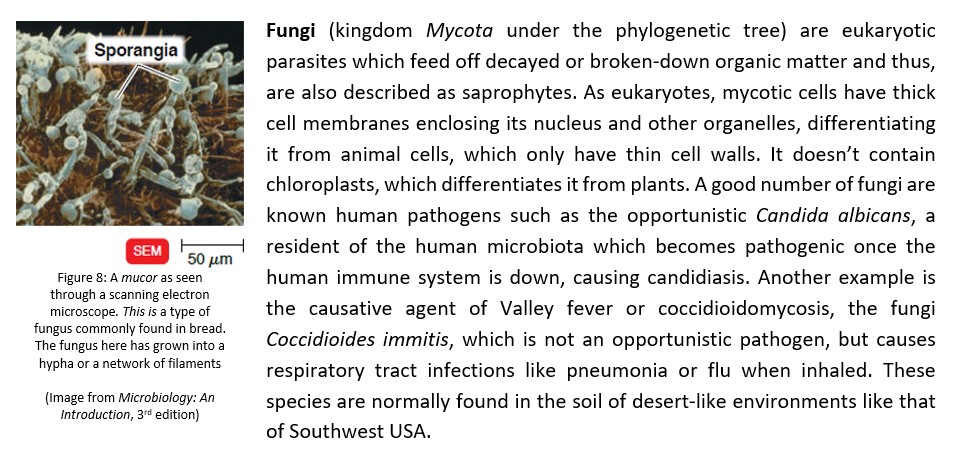
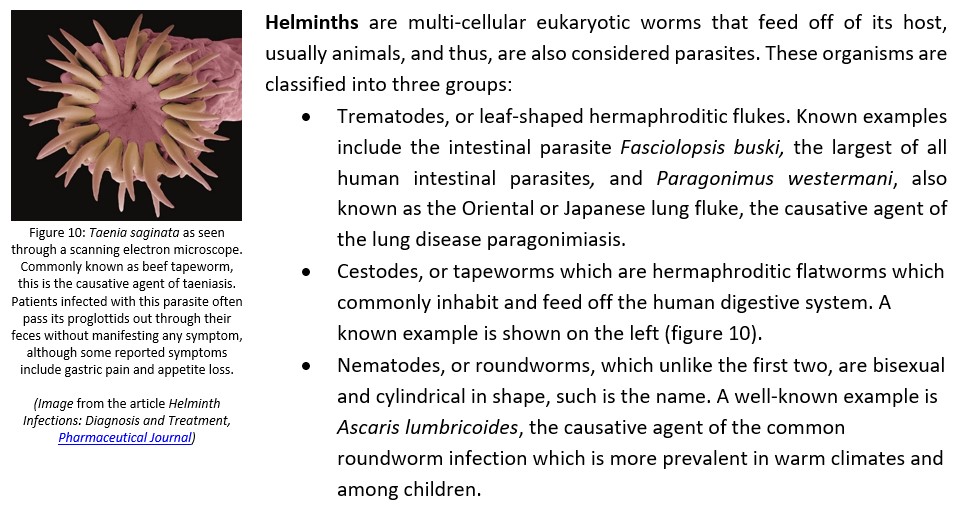
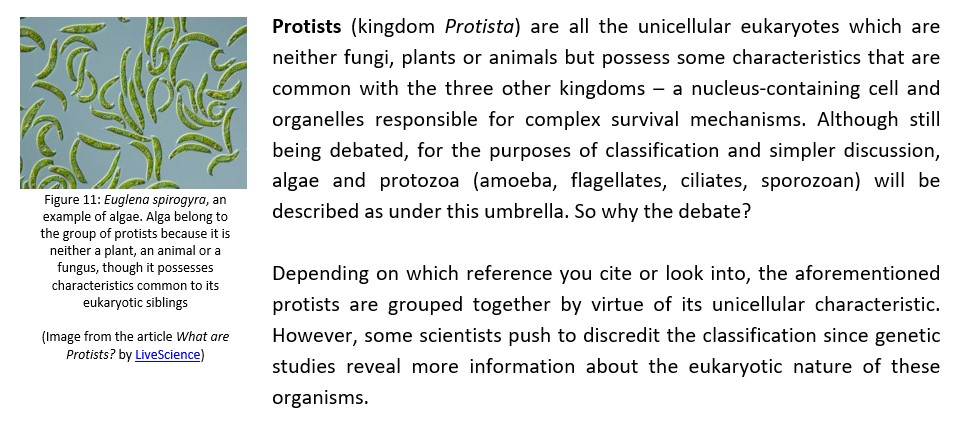
For example, unicelled algae are capable of evolving into a multicellular one (video clip 5). In another example, some protists in anaerobic environments can survive because of the hydrogenosome, its version of the mitochondria. Some scientists deduce that such evolutionary patterns or “improvisations” deem complex for organisms that were regarded very lowly in the phylogenetic tree.

Figures 12 (left) and 13 (right): More examples of protists. (Left) An amoeba using its pseudopods to engulf a food particle, as seen through a scanning electron microscope. (Right) Volvox globator, a green alga also known as the “Globe algae” as seen through a light microscope.
(Images from Microbiology: An Introduction, 3rd ed.)
Video Clip 5: “Scientists Have Witnessed in Real-time a Single-celled Algae Evolve into a Multicellular Organism 6”
Time-lapse video By ScienceAlert
Some forms of alga are known to be pathogenic such as Harmful Algal Blooms (HABs), which can be generally seen on the surface of large bodies of water (figure 14). Its harmful effects have been observed not only in humans but also in marine life as these produce toxins that disrupt the ecosystem.

Figure 14: Harmful Algal Blooms (HAB) found on the surface of lakes, seas and other bodies of water
Images from the Centers for Disease Control and Prevention
A good number of protozoa are also known to be causative agents of various diseases. Examples are:
- The intestinal amoeba Entamoeba histolytica, which causes amoebiasis and dysentery
- The urogenital flagellate Trichomonas vaginalis, the origin of the STD trichomoniasis
- The sporozoan Toxoplasma gondii, the causative agent of the opportunistic infection toxoplasmosis
- The intestinal ciliate Balantidium coli, the only pathogenic ciliate and causative agent of the disease Balantidiasis

- What is the most distinct feature of eukaryotes that differentiates it from bacteria and archaea?
- Further reading: Differentiate the different eukaryotic kingdoms – fungi, plants, animals, and protists
- Differentiate the following based on their cell structures: fungi, helminths, protists
- Further reading: Explain the pathogenic mechanism (how it causes diseases) of the three groups mentioned in the previous item. Give at least two known causative agents for each group.
Viruses: The “Fourth” Domain
Viruses are probably the group of microbes that deserves a domain of its own by nature of its morphology, structure, survival characteristics, life cycle, difficulty in visualization, isolation, and analysis, and sheer pathogenicity.
Viruses are different from the rest of the microbial world because technically, these are not viable organisms. It can only be viewed through an electron microscope. It lacks cell(s) and organelles, or even a cellular mechanism for energy and food. All it has structurally is a group of genetic material enveloped by proteins called capsid (figure 15).

Figure 15: Morphology of a Virus, specifically SARS-CoV-2, the causative agent of COVID-19
Image from the article 2019 Novel Coronavirus (2019-nCoV) Update: Uncoating the Virus
By Dr. Rodney Rohde, American Society for Microbiology
The capsid can sometimes be enveloped by carbohydrates, proteins, and lipids. But despite this simple structure, it can significantly alter its host’s genetic makeup because all it needs to do is to attach itself to the host, drop its viral genome into the host and then continuously and spontaneously replicate itself.
It’s like a Trojan horse or a hijacker; it enters the host undetected because it doesn’t call attention to itself – it doesn’t look foreign. Then, it unleashes damage once it latches itself within the host’s perimeter or once it’s “seated comfortably in the vehicle.”
The presence of spikes (figure 15) on its exterior facilitates a more efficient host attachment. It attaches like a parasite does but doesn’t feed off of the host. Its mechanism for infection is distinct among other microbial pathogens, and yet it cannot survive without a host.
But contrary to popular notion, not all viruses are harmful. Like bacteria, some viruses are beneficial to human health, like the bacteriophages seen in the human gut and other body openings. It helps maintain the growth of residents and even pathogenic bacteria, thus maintaining microbiome equilibrium.
More importantly, bacteriophages, also sometimes described as a “forgotten virus,” can attack specific bacteria, which is a feasible solution to the growing problem of antibiotic resistance, or the emergence of “superbugs” (video clip 6).

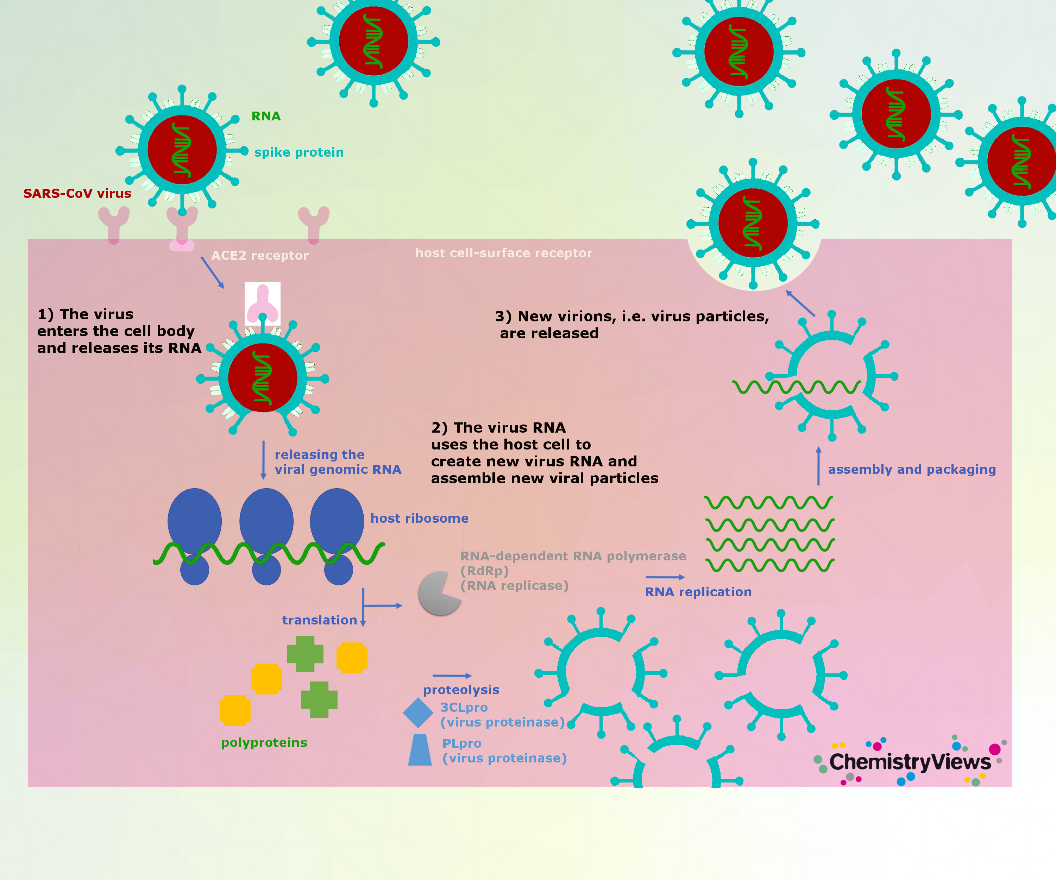
Figure 16: How a virus, specifically the SARS-CoV-2 of COVID-19, enters the body, replicates and causes havoc to the host
Figure from the article Coronavirus Entering and Replicating in a Host Cell, by Chemistry Views
Video Clip 6: “Phage Treatment Saves A Life”
By the University of California San Diego School of Medicine
Microorganisms are one of the greatest paradoxes of our world. It is so small that it cannot be seen and yet can start a pandemic and paralyze nations. Think of the Spanish Flu and now, COVID-19. It has earned such notoriety that to think of them as equally beneficial is mind-boggling. Yet, they are, with the Lactobacilli, Bifida, and even the excellent but forgotten virus bacteriophages residing in our bodies.
So, to say that the study of microbiology is engaging is an understatement. It’s both impactful and relevant even to non-scientific folks, especially in these times.

- What are viruses? What makes these entirely different and distinct among all the other microorganisms?
- Explain how a virus infects its host
- What are bacteriophages? Explain its relevance and impact against superbugs

REFERENCES
- Tortora, Gerard J.; Funke, Berdell R.; Case, Christine L. Microbiology: An Introduction. 13th edition. USA, Pearson Education, 2019.
- NASA Johnson Space Center (2019). Video: Space Station Microbiology: Where People Go, Microbes Follow. NASA Johnson Youtube Channel.
- BBC Archives and History (No publish date). Antonie van Leeuwenhoek (1632 – 1723). http://www.bbc.co.uk/history/historic_figures/van_leeuwenhoek_antonie.shtml
- Feder, Elah; Flatow, Ira; Strick, James. (2019): Revisiting the Debunked Theory of Spontaneous Generation (Podcast). Science Friday.
- Pontin, Jason (2018). The 19th-Century Crank Who Tried to Tell Us About the Microbiome. Wired.
- SumiGK (2017). Branches of Microbiology. General Micro Science.
- Stearns, Jennifer C.; Surette, Michael G.; Kaiser, Julienne C. Microbiology for Dummies. 1st edition. Hoboken, NJ, USA. John Wiley & Sons, Inc., in 2019.
- Microbiology Society, (2020). Video: Why Microbiology Matters? Microbiology Society YouTube Channel.
- Cornelissen, Cynthia Nau; Fisher, Bruce D.; Harvey, Richard A. Lippincott’s Illustrated Reviews: Microbiology. 3rd edition. Philadelphia, PA, USA. Lippincott Williams & Wilkins. 2013.
- Pappas, Stephanie (2017). What Was the First Life on Earth? Live Science.
- Ghose, Tia (2013). 3.5-Billion-Year-Old Fossil Microbial Community Found. Live Science.
- Metcalfe, Tom (2016). 3.7-Billion-Year-Old Rock May Hold Earth’s Oldest Fossils. Live Science.
- Ghose, Tia (2017). World’s Oldest Fossils Possibly Uncovered in Canada. Live Science.
- Wang, Baohong et al. (2017). The Human Microbiota in Health and Disease. Engineering Journal, 3(1), 71-82. https://doi.org/10.1016/J.ENG.2017.01.008
- Patrick, Sheila. Chapter 51 – Bacteroides. Molecular Medical Microbiology 2nd edition. Waltham, MA, USA. 2015. https://doi.org/10.1016/B978-0-12-397169-2.00126-8
- Genuine Health (2017). What’s the Difference Between Resident and Transient Strains? Genuine Health.
- Centers for Disease Control and Prevention (2014). The Threat: Why Would Anthrax be Used as a Weapon? Centers for Disease Control and Prevention.
- Engelhaupt, Erika (2015). You’re Surrounded by Bacteria That Are Waiting for You to Die. National Geographic Science.
- Encyclopedia.com (2020). Microbial Taxonomy. https://www.encyclopedia.com/science/encyclopedias-almanacs-transcripts-and-maps/microbial-taxonomy
- The National Academies. How Pathogens Make Us Sick (no publishing date). http://needtoknow.nas.edu/id/infection/how-pathogens-make-us-sick/
- Lang, J. M. & Benbow, M. E. (2013). Species Interactions and Competition. Nature Education Knowledge 4(4):8
- National Human Genome Research Institute (2015). Polymerase Chain Reaction (PCR) Fact Sheet. https://www.genome.gov/about-genomics/fact-sheets/Polymerase-Chain-Reaction-Fact-Sheet
- Shields, Jesslyn (2020). What’s the Difference Between Prokaryotic and Eukaryotic Cells? How Stuff Works.
- Pace, Norman R. Time for a Change. Nature 441, 289 (2006). https://doi.org/10.1038/441289a
- Biology Online Editors. Archaea Definition. (No publishing date). https://www.biologyonline.com/dictionary/archaea
- Dubois, A. (1995). Spiral Bacteria in the Human Stomach: The Gastric Helicobacters. Emerging Infectious Diseases, 1(3), 79-85. https://dx.doi.org/10.3201/eid0103.950302.
- Steward, Karen (2019). Gram Positive vs. Gram Negative. Technology Networks – Immunology.
- Lowy, Frank (2009). Bacterial Classification, Structure, and Function. Columbia University.
- Ravella, Shilpa (2017). Video: How the Food You Eat Affects Your Gut. TED-Ed.
- Microbiology Society, (2015). Video: Microbiology Techniques: Gram Staining. Microbiology Society YouTube Channel.
- National Institute of Allergy and Infectious Diseases (2018). Fungal Disease-Specific Research. NIAID-NIH.
- Hedley, Lucy; Serafino Wani, Robert L. (2015). Helminth Infections: Diagnosis and Treatment. The Pharmaceutical Journal, October 2015, Vol 295, No 7882, online | DOI: 10.1211/PJ.2015.20069529
- Vidyasagar, Aparna (2016). What are Protists? LiveScience.
- Leggett, Rochelle (2017). Difference Between Protozoans & Algae. Sciencing.
- Centers for Disease Control and Prevention (2018). Harmful Algal Bloom (HAB)-Associated Illness. https://www.cdc.gov/habs/index.html
- Ratcliff et al. (2019). Video: Scientists Have Witnessed in Real-time a Single-celled Algae Evolve into a Multicellular Organism 6. ScienceAlert YouTube.
- Harris, Hugh (2020). In Defence of Viruses. The Conversation.
- Steele, Jim (2020). OK, We’re Dealing with COVID-19, but What’s a Virus in the First Place? Medical Xpress.
- Rohde, Rodney (2020). Should You Be Worried about the Novel Coronavirus Outbreak? American Society for Microbiology.
- Koester, Vera (2020). Coronavirus Entering and Replicating in a Host Cell. Chemistry Views. DOI: 10.1002/chemv.202000018
- University of California San Diego School of Medicine (2017). Video: Phage Treatment Saves A Life. UCSD Health YouTube Channel.
- Gordillo Altamirano, Fernando L.; Barr, Jeremy J. Phage Therapy in the Postantibiotic Era. Clinical Microbiology Reviews Jan 2019, 32 (2) e00066-18; DOI: 10.1128/CMR.00066-18. American Society for Microbiology.
- Wiedenhoft, Heather (2018). What Are the Different Types of Microscopy Used in a Microbiology Laboratory? Sciencing.
Get a PDF copy of this Crash Course in Microbiology by Online-Bachelor-Degrees.com
